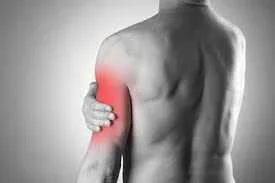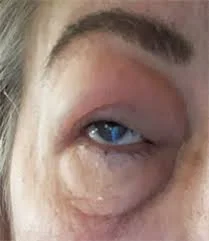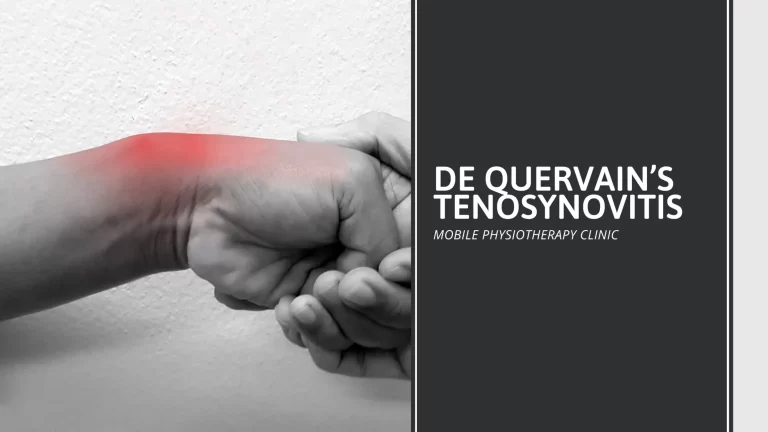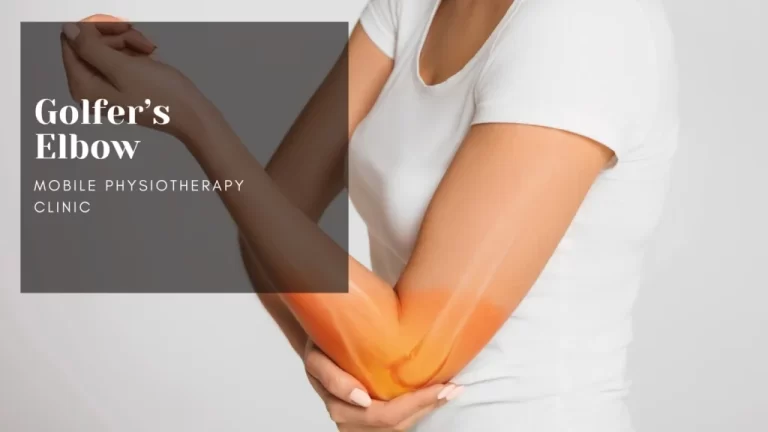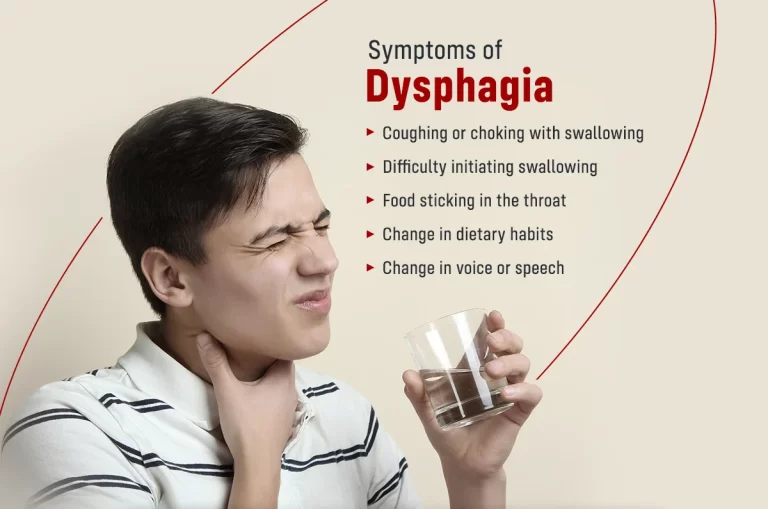Muscle Tightness
Table of Contents
What Is Muscle Tightness?
“Muscle tightness” refers to the sensation of stiffness, tension, or restricted range of motion in the muscles.
It is a common illness that can affect many body parts and have a variety of causes.
This tightness can cause anything from mild discomfort to severe pain, which can interfere with daily activities and overall health.
Symptoms
Muscle tension can manifest itself as a range of symptoms, differing in intensity and duration, dependent upon the underlying cause. The following items are typical symptoms of tight muscles include:
Stiffness:
A feeling of decreased range of motion and increased difficulty while attempting to move a particular joint or muscle.
Reduced Range of Motion:
A joint’s range of motion limitation is caused by stiffness in the surrounding muscles.
Discomfort or Pain:
It is possible to feel weak, burning, or painful muscles, particularly while moving or palpating them.
Tenderness:
The affected muscles may have tender areas and may be touch-sensitive.
Muscle Spasms:
A sudden and often severe tightness in the muscles is caused by involuntary contractions or spasms in the affected muscles.
Fatigue:
Muscles might feel utilized and weak even with minimal work.
Headache
Relaxed muscles in the neck and shoulders might result in tension headaches.
Difficulty Sleeping:
Pain or discomfort brought on by muscle tension can interfere with sleep and make it more difficult to get a decent night’s rest.
Limited Mobility:
In severe cases, muscle stiffness can significantly impair mobility and make daily tasks difficult.
Warmth and Swelling:
Due to inflammation in the impacted muscles, the affected area may become hot, red, or swollen.
It’s critical to understand these symptoms and get medical attention if the muscular stiffness doesn’t go away or gets more difficult.
Tension in the muscles that is persistent or recurrent may be a sign of an underlying disease that has to be appropriately identified and treated.
Causes of Muscle Tightness
A variety of factors can cause muscle tension, and it is typically the result of many factors working together. Here are a few common causes of stiff muscles.
Physical Activity and Overexertion:
Muscle strain and fatigue may be the outcome of common or tough activity.
Mistakes in pre-activity warming up might make muscles more tense.
Poor Posture:
Long-term unsuitable posture maintenance, such as bending over a desk, can cause stress and muscle imbalances, particularly in the back, shoulders, and neck.
Muscle Imbalances:
One possible cause of compensatory tightness is weakness or imbalance in the opposing muscle groups.
Dehydration:
Dehydration can impede the proper functioning of muscles, leading to spasms and rigidity.
Stress and Anxiety:
Physical signs of emotional stress include tense and tense muscles, most commonly in the neck, shoulders, and upper back.
Injury or Trauma:
In an attempt to prevent additional injury, protective muscular tightness is a reaction to sprains, strains, or other muscle damage.
Injury or Trauma:
In an attempt to prevent additional injury, protective muscular tightness is a reaction to sprains, strains, or other muscle damage.
Medical Conditions:
Many conditions, including sciatica, arthritis, and neurological conditions can result in muscle tension.
Lack of Stretching:
Mistaken stretching before or after exercise might cause muscle stiffness.
Inflammatory Conditions:
Inflammation in the tendons, muscles, or joints can cause tension and discomfort.
Neurological Issues:
Nerve compression or issues relating to nerve impulses might result in muscles that are too tight.
Medication Side Effects:
Many medications can have negative effects, including tension in the muscles.
Aging:
Because of a potential decline in muscle flexibility, people are more prone to experience muscular stiffness as they age.
Genetics:
Some people may be more responsible for suffering muscle stiffness due to genetic causes.
Diagnosis
An in-depth examination by a medical specialist is typically necessary to determine the cause of muscle stiffness.
These are the standard protocols and considerations to have during the diagnostic process.
Medical History:
The physician will inquire about your medical history, including any surgeries, wounds, or ongoing medical conditions.
Symptom Assessment:
Discussing the kind, location, and duration of the muscle stiffness in detail is crucial.
This makes it easier to understand the specific symptoms and how they impact daily activities.
Physical Examination:
A thorough physical examination is conducted to assess the affected muscles and joints.
Palpation, range-of-motion tests, and other methods may be used to locate areas of discomfort, weakness, or restricted movement.
Posture And Movement Analysis:
Finding any underlying issues with incorrect biomechanics or muscular imbalances that might lead to muscle tension can be facilitated by evaluating a person’s posture and gait.
Neurological Examination:
Testing for nerve function can be required, especially if there are signs of nerve compression or other neurological issues that are producing muscular stiffness.
Imaging Studies:
Sometimes, imagery tests like CT scans, MRIs, or X-rays may be requested to view the bones, muscles, and other structures.
This can assist in determining any injuries, inflammatory diseases, or structural irregularities.
Blood Tests:
To rule out inflammatory indicators, systemic disorders, or any underlying medical problems that could be causing muscular stiffness, blood tests may be performed.
Electromyography (EMG):
An EMG may be done to evaluate the electrical activity of the muscles and nerves if there is a suspicion that there are problems connected to the nerves.
Collaboration with Specialists:
To further assess and manage the disease, the healthcare practitioner may work in conjunction with specialists such as rheumatologists, neurologists, orthopedic physicians, or physical therapists, depending on the results.
Patient Input:
Your suggestions on your way of life, your activities, and everything that makes the muscular tightness worse or better are helpful in the diagnosis procedure.
The healthcare professional can then create a personalized treatment plan based on the identified underlying reason after a diagnosis has been made.
Physical therapy, medication, lifestyle changes, and, in certain situations, surgical procedures are possible forms of treatment. It’s critical to follow up with medical experts to ensure continued monitoring and any necessary modifications to the treatment plan.
Treatment of Muscle Tightness
The underlying reason for muscular stiffness determines how to treat it.
The following are some broad strategies and actions that medical practitioners could suggest:
Rest And Activity Modification:
Avoid activities that might make the injured muscles more tense so they have time to heal.
Adjust your routine to lessen the load on the injured muscles.
Stretching Exercises:
Mild stretches can help release tense muscles and increase flexibility. Stretching the Infected muscles regularly is important, but avoid doing so aggressively as this might lead to more damage.
Strengthening Exercises:
Exercises designed to strengthen certain muscle groups can help correct imbalances and improve support for the Infected areas.
Physical Therapy:
To relieve muscular tightness, a physical therapist can create a customized workout plan, do manual treatment, and advise on improving posture and body mechanics.
Heat And Cold Therapy:
It might be helpful to relieve inflammation and ease muscular tension in the afflicted area to apply either heat or cold (ice packs).
Depending on the circumstance, use the right technique.
Over-The-Counter Pain Medications:
It can be advised to use over-the-counter painkillers like acetaminophen or ibuprofen to treat pain and inflammation. However, you must take them exactly as directed and see a medical professional if you have any questions.
Prescription Medications:
To treat muscular stiffness and related symptoms, doctors may occasionally prescribe prescription pharmaceuticals such as muscle relaxants or anti-inflammatory drugs.
Massage Therapy:
Blood circulation may be enhanced and stiff muscles can be relaxed by massage. A skilled massage therapist can give relief by focusing on particular muscle groups.
Hydration:
Make sure you’re getting enough fluids because dehydration can increase tension in muscles.
Water keeps muscles flexible and in good working order.
Ergonomic Adjustments:
Make changes to your daily routine or workstation to encourage improved posture and lessen muscular tension. This is particularly crucial for people who work long hours at a desk.
Stress Management:
Stress-reduction methods like yoga, meditation, and deep breathing might ease tense muscles if stress is a significant issue.
Orthopedic Devices:
Depending on the ailment, orthopedic equipment like braces or splints may be advised to give support and lessen muscular tension.
Surgical Intervention:
Surgery can be the last option in situations when structural problems, trauma, or nerve compression are the cause of muscular tightness.
There is a demand for connection with a medical expert to decide the best course of action for treating muscular stiffness, considering its particular cause.
They can assist in managing symptoms while attending to the underlying problems and offer advice on the best course of action.
Prevention
To avoid developing muscular tightness, people may also adopt a few easy lifestyle modifications. Among them are:
- Exercising Regularly
- Heating Up and Down Before And After Exercise
- Stretching The Muscles
- Using Correct Footwear During Exercise
- Using Warm Clothing In Cold Weather
- Practicing Good Posture
- Making Sure The Furniture At Home And Work Provides Support And Comfort
- Avoiding Long Periods Of Inactivity
Diet
Because a well-balanced diet gives the body the nutrition it needs to maintain healthy muscular tissue, it can help alleviate muscle stiffness and soreness. Maintaining a healthy lifestyle always comes down to drinking plenty of water and eating a balanced, nutrient-rich diet with adequate protein.
Additionally, it may lessen the chance of muscular stiffness. It takes specific minerals, including calcium, magnesium, and vitamin D, to keep muscles in good condition. By including these nutrients in your diet, you can lessen the soreness and stiffness in your muscles.
In addition, remember that dehydration can cause cramps and spasms in the muscles, so make an effort to stay hydrated to prevent muscular stiffness.
Everyday hydration is essential, and you may experiment with different herbal teas or mix fruit pieces with boiling water to make mouthwatering mixtures.
Stand away from processed and sweet meals. These meals have the potential to make the body more inflammatory, which can lead to stiffness and discomfort.
It’s vital to remember that one aspect influencing the health and rigidity of muscles is food. Maintaining healthy muscles can also be influenced by other elements including exercise, rest, and stress reduction.
Typical food sources of magnesium and calcium are as follows:
- Avocados.
- Bananas.
- Dairy products.
- Dark plants greens.
- Fatty fish.
- boosted foods, like orange juice and breakfast cereals.
- Nuts and seeds.
Stretching Exercises
Shoulder stretches come in two different types.
Their names are posterior and anterior.
This stretching practice is especially helpful for those who spend their whole workday slumped over a chair while using a computer.
With just a 30-second shoulder stretch, your posture will improve immediately.
Stretch your arms forward, encircling your shoulders and upper back, and tilt your chin towards your chest while standing with your feet shoulder-width apart.
Combine the Together your fingers with the palms facing outward.
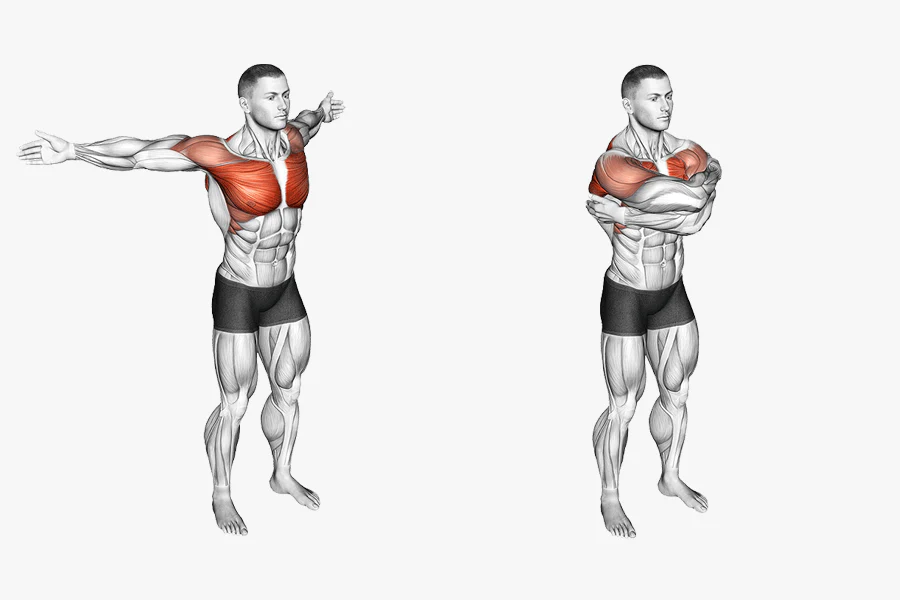
The anterior shoulder stretch is this. Put your hands or fingers together behind you, drop your shoulders, and open out your chest.
This shoulder stretch helps release the strain and tension from a hectic day on your neck and shoulders.
Standing Quad Strech
They need to do this stretch if you have been sitting all day.
Knee discomfort and soreness can result from inactive knees.
Athletes can also benefit greatly from this stretch, particularly runners.
Stretching your quadriceps while standing allows your knees to breathe and increases your range of motion.
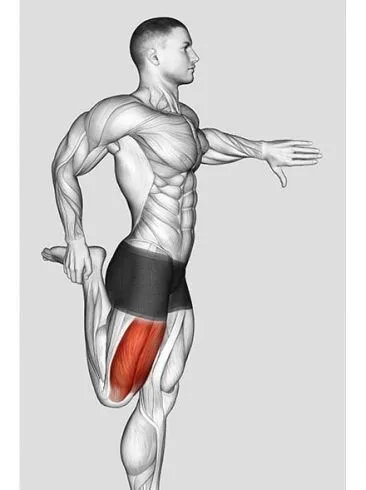
Keep your foot behind you while standing straight and bending your right knee.
Your left hand might be extended to the side or raised.
Developing physical focus to improve balance is one of the exercise’s other key objectives.
You may perform this stretch against a wall if you’re having trouble staying balanced.
Spinal Twist
This stretch affects general posture the most out of all the stretching exercises mentioned.
Your body’s general health and the health of the surrounding organs are impacted by the condition of your spine.

Your posture will improve and your spine will have the necessary flexibility when you twist it.
With your knees crossed and your back straight, sit on the floor.
Place your right hand’s fingers on the ground behind you and your left hand’s palm on your right. Turn your back to the right gradually.
This exercise extends your body from the base of the spine to the neck.
Forward Bend Strech
This stretch, which is sometimes referred to as a standing forward stretch, releases tension from your hamstrings, back, neck, and spine.
With both hands by your sides, take a straight, tall stance.
Breathe deeply, raise your hands from the sides, and progressively lean forward to touch your toes. You can slightly bend your knees.
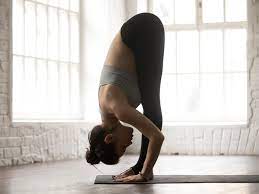
If you can’t reach your toes, just bend as much as you can, and don’t worry.
If you perform these stretching exercises daily, you will ultimately be able to touch your toes.
You can try and change a variety of additional forward bend variations in addition to this one based on your needs and level of flexibility at the time.
Conclusion
In conclusion, a variety of variables, such as physical activity, bad posture, muscular imbalances, stress, and underlying medical disorders, can lead to the widespread ailment known as muscle tightness. Identifying the precise reason is necessary to create a treatment method that works.
A thorough assessment, including a medical history, physical examination, and, if required, imaging investigations, is required to diagnose muscular tightness. Rest, stretching exercises, physical therapy, medication, and lifestyle changes are common forms of treatment. Regular exercise that includes low-impact, strengthening, and stretching exercises can help to increase overall well-being and muscular flexibility.
It’s important to connect with medical experts for a comprehensive evaluation and tailored advice on how to treat muscular tension. Requesting medical treatment helps prevent future issues if symptoms improve or develop and ensures that the right medicine is taken.
FAQ
Muscle stiffness from an injury or after activity is the most frequent reason. Additional underlying causes of muscle stiffness include fibromyalgia, Lyme illness, and lupus. Certain underlying disorders can be addressed with over-the-counter medications to relieve muscular stiffness, but in other circumstances, medical attention is necessary.
Physical treatments including massage, stretching, manual therapy, soft-tissue therapy, active release therapy, and ischemic compression methods are used to relax the muscle and further loosen the knot. The Stretch and Apply method is an additional technique that may be used.
Joint stiffness is the sensation of having a limited range of motion, whereas muscular stiffness is discomfort or tightness in your muscles. Although they may be able to move their joint over their whole range of motion, those with stiff joints may need to use force to move their joints.
Strengthening muscle balance and strength can aid in the treatment of tense muscles. You might attain muscular balance and lessen tension in the targeted muscle by strengthening the damaged and surrounding muscles.
People of all fitness levels may be affected, especially if they try a new exercise or push themselves harder than usual. In two to five days, your muscles will usually cease hurting, and you won’t require medical treatment. You need to be able to reduce your symptoms.
Fatigue, psychological symptoms including depression, and macrocytic anemia are among the most common symptoms of vitamin B12 insufficiency. Neurologic symptoms include sensation in hands and feet, muscular cramps, dizziness, cognitive problems, ataxia, and erectile dysfunction.
By responding with regulatory proteins that, in the absence of calcium, block the connection between actin and myosin, calcium causes contraction. Different muscles have two distinct regulation systems.
Muscle attachments should passively glide apart with ease and a smooth, bouncy, pain-free end-feel while being tested for tightness. A restricted range of motion will provide a harsh, uncomfortable end feel.
Exercise, massage, physical therapy, and trigger point injections are among the available treatment methods. Painkillers and relaxation techniques can also be beneficial.
Additional underlying causes of muscle stiffness include fibromyalgia, Lyme illness, and lupus. Certain underlying disorders can be addressed with over-the-counter medications to relieve muscular stiffness, but in other circumstances, medical attention is necessary.
Physical Therapy. Physical therapy is a fantastic place to start when dealing with tense and painful muscles.
Stretching.
Massage.
Foam Rolling.
Heat Therapy.
Cold Therapy.
Cross-Training.
Yoga.
Cherries and tart cherry juice. Cherries are rich in antioxidants and anti-inflammatory compounds.
Blueberries.
Protein.
Magnesium.
Curcumin.
Pomegranate juice.
Arnica.
Capsaicin.
When muscles are stiff and difficult to move, especially after resting, it is referred to as muscular stiffness. They may get painful as a result of this. An infection, a sprain or strain, and drug usage are some of the potential reasons. Pain, cramps, and discomfort can also accompany stiffness in the muscles.
According to recent studies, vitamin C may help with muscular soreness. This is great news since mild aches and pains or even severe discomfort from hard physical labor frequently interfere with our day-to-day activities. Our everyday routine rapidly becomes less enjoyable due to the discomfort.
Loss of muscle strength.
Headache.
Headache that continues for a long time.
Memory loss.
Numbness or tingling sensation.
Muscle rigidity.
Back pain.
Tremors or seizures.
Stage 1 is decreased levels of vitamin B12 in the blood. Stage 2 is a low concentration of vitamin B12 in the cell and metabolic abnormalities. Stage 3 is increased levels of homocysteine and MMA and decreased DNA synthesis resulting in neuropsychiatric symptoms. Stage 4 is macrocytic anemia

